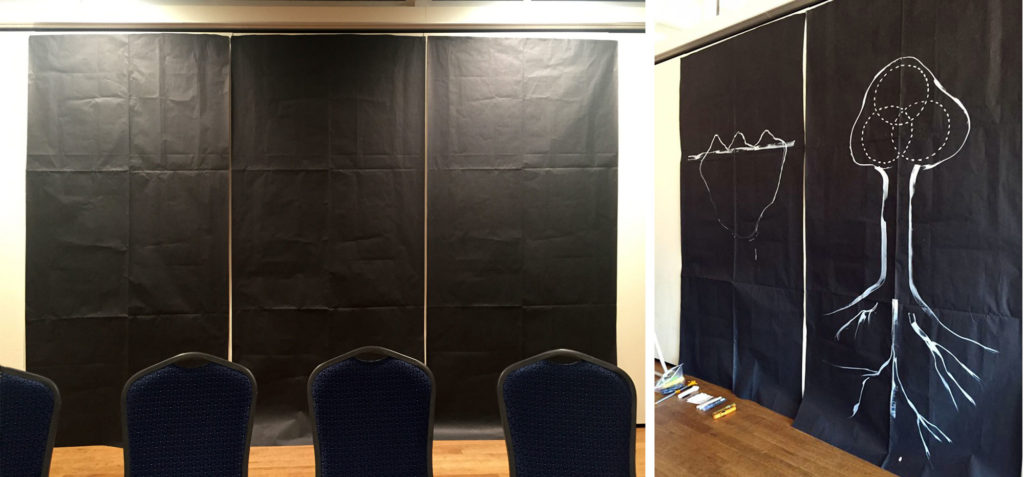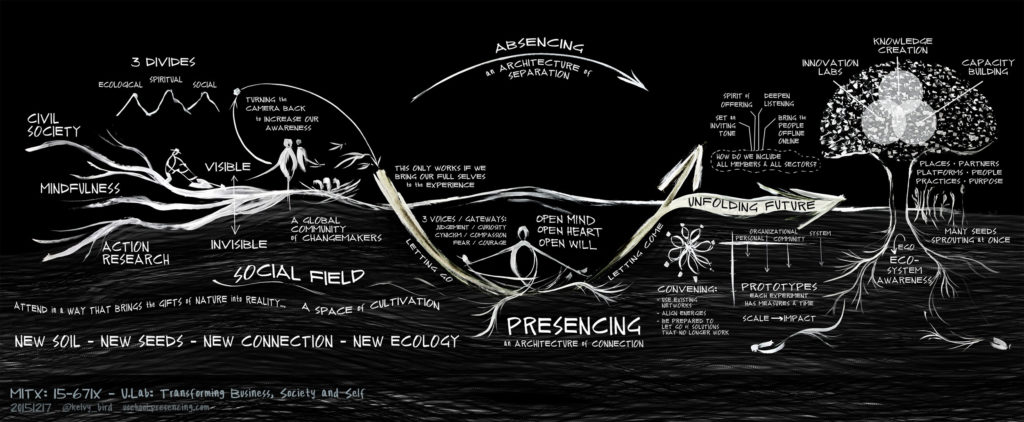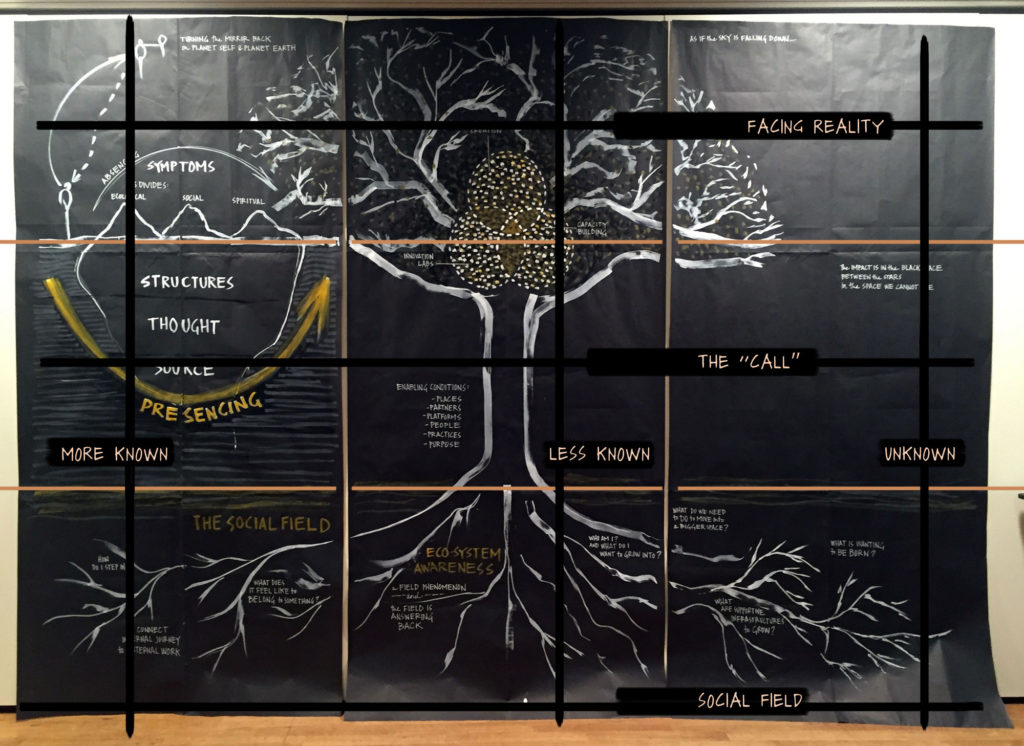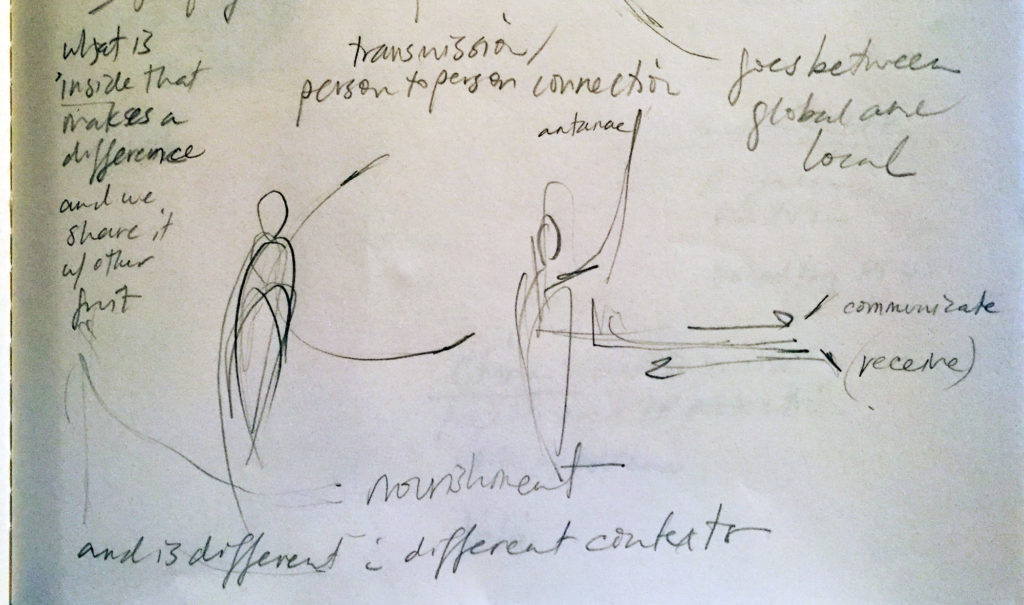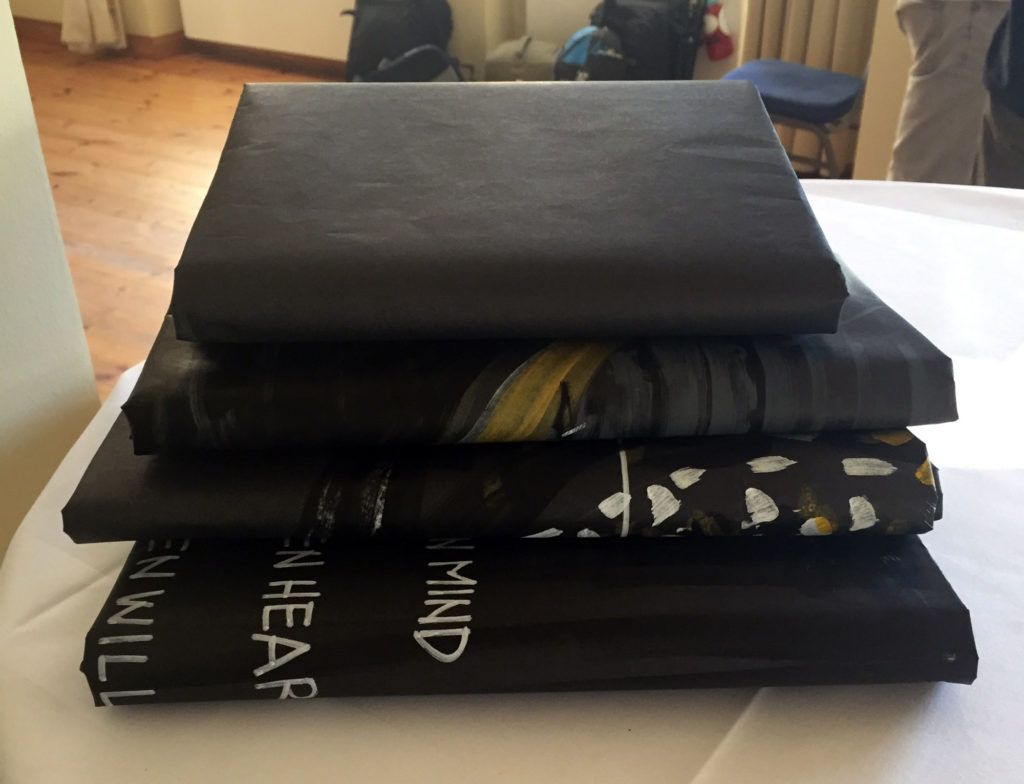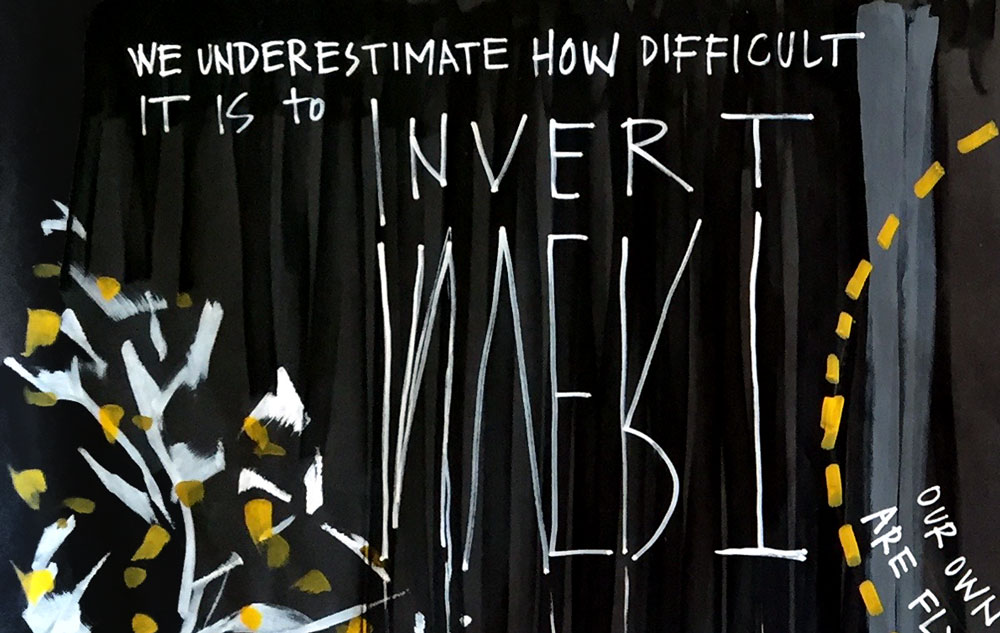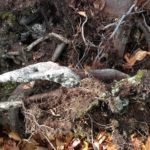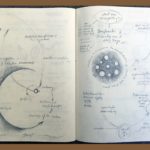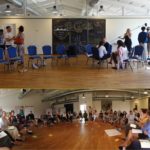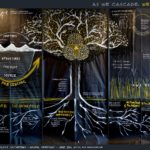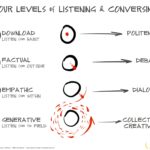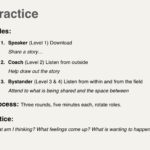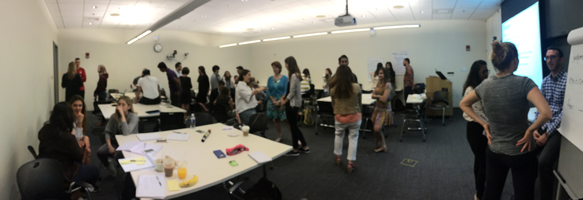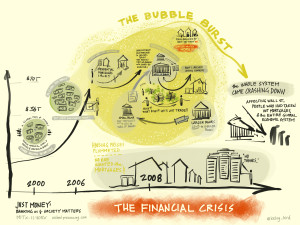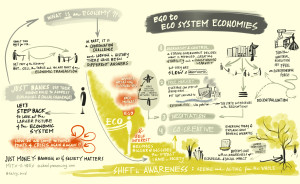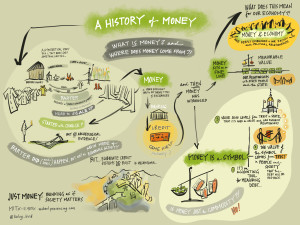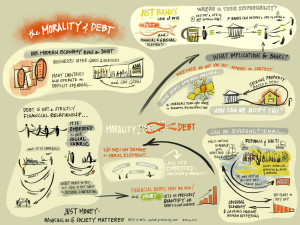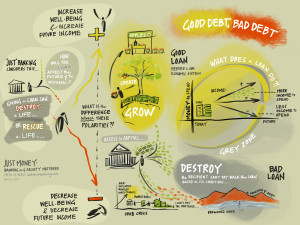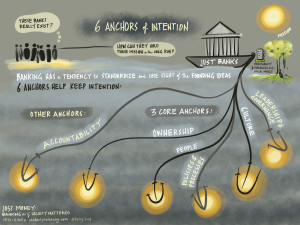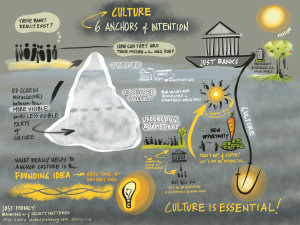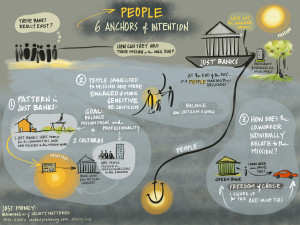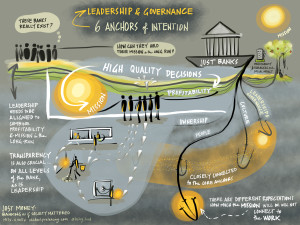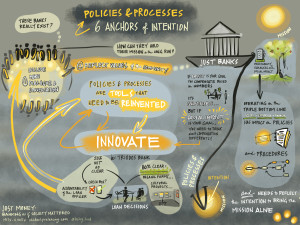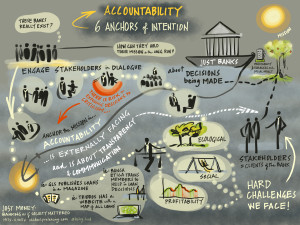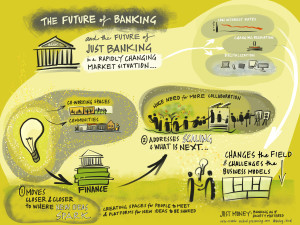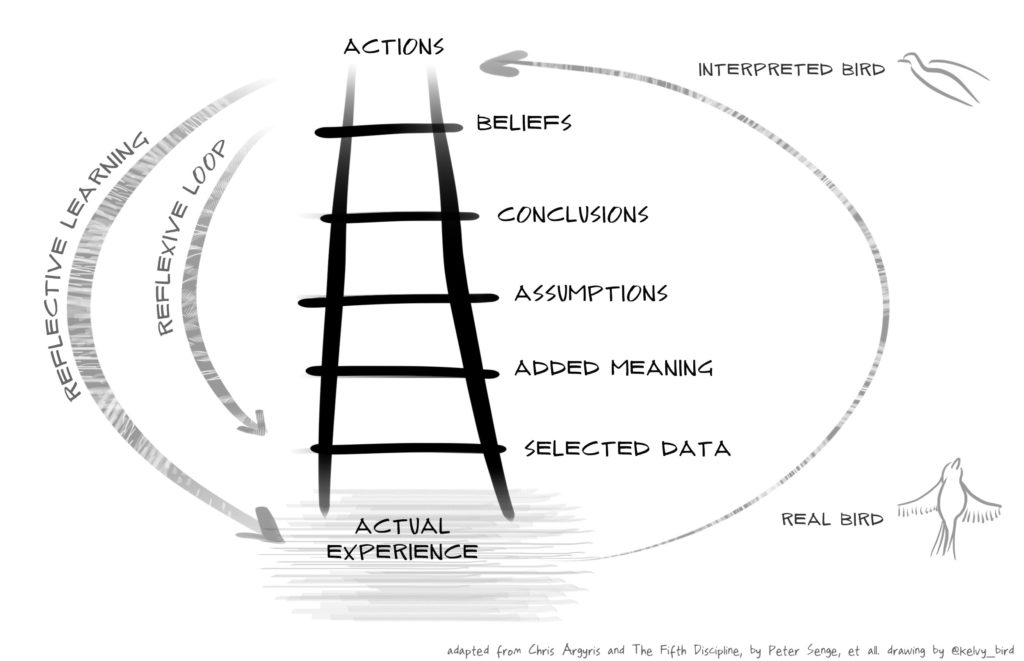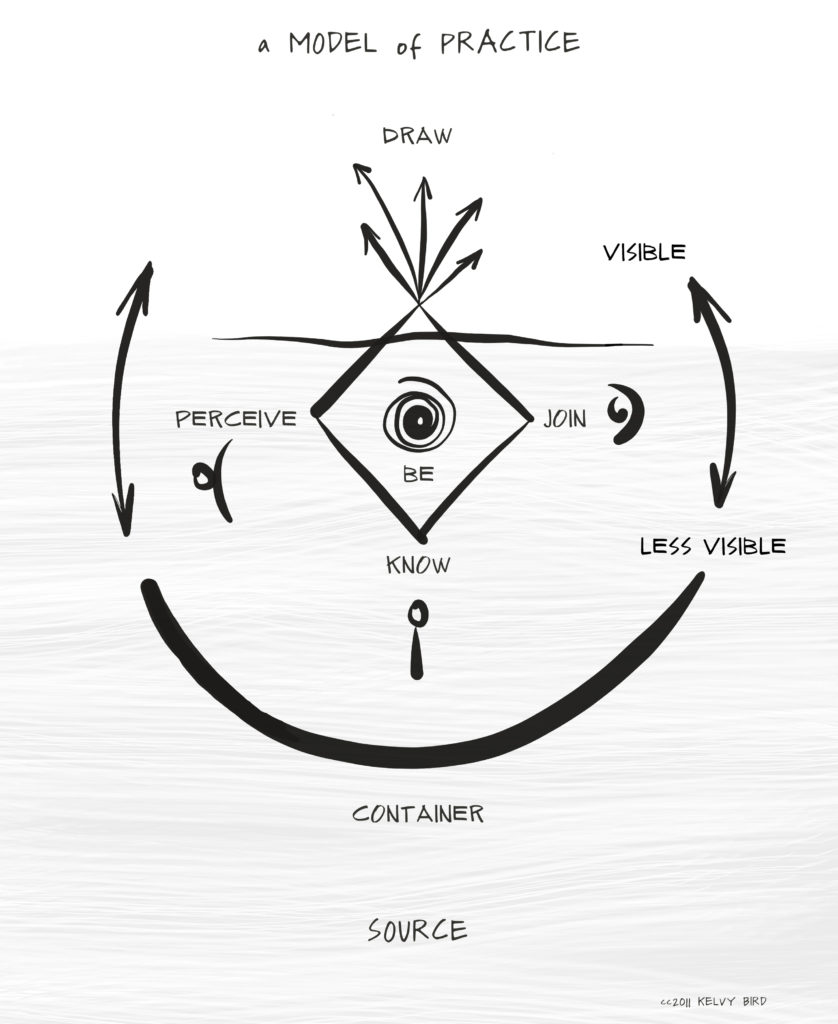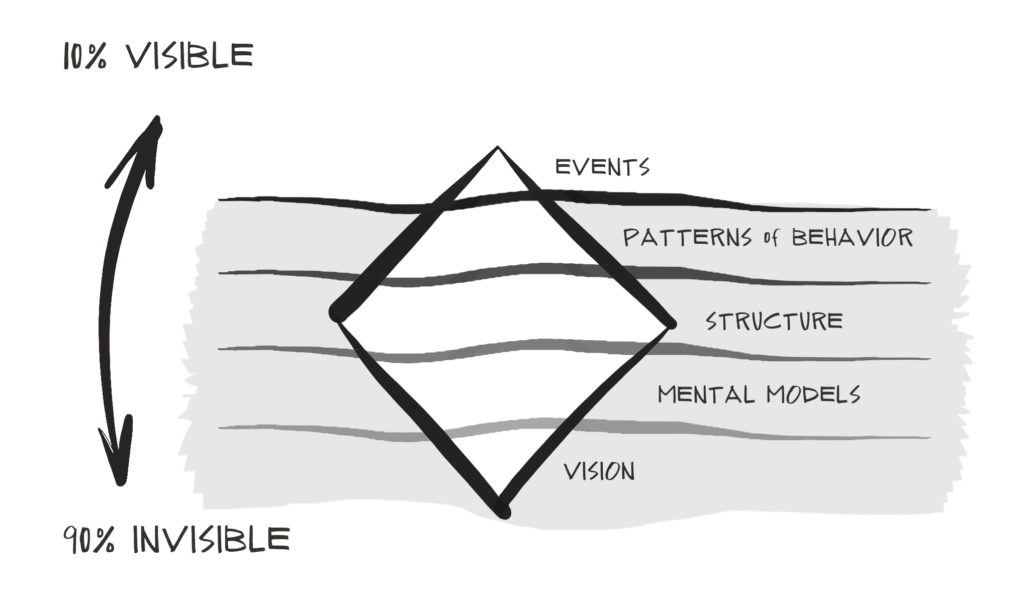We trip and climb our way through the weeds of societal transformation, facing intertwining threads of sorrow and possibility, to ascend.
At a recent u.school ecology gathering outside Berlin – immersed in a community of global stewards of change – i faced an inner struggle to access true “will.” This was not caused by fear, but by despair; making a few inky marks over a small two-day span seemed like a futile effort to positively touch what was going on in the world.
I had landed with a heaviness from the current state of affairs in my country (the US) – mind-boggling inequality, a political circus, the Orlando massacre… among much else – to the morning news of Brexit and again-tumbling markets. A foggy, heated, 94°F landing.
Knowing these u-drawings have their own ripple effect, though, i also felt real responsibility to get out of my own way to open up, to be OF. i KNEW that the only way to honor the moment was to dive in, to scale down, to connect with the most internal and universal place i could access (a place some call Source) and from Source, make sense and draw.
Here’s the tale of the unfolding then… another drawing, another unravel. This will be in part about the actual content of the session, but more so about the drawing process itself, addressing the thinking that is behind/below the visual forms people receive as end results.
INSPIRATION – MAPPING – DIVING – LETTING GO – GENERATIVE SCRIBING
INSPIRATION
Earlier this year, I had seen an exhibit of Aboriginal art at the Museum of Civilization in Quebec City, and was stunned into silence at the communally derived, cultural storytelling. Large expanse of sequential dots, lines, pure earth-pigment hues. Natural. Raw. Direct. Pure.
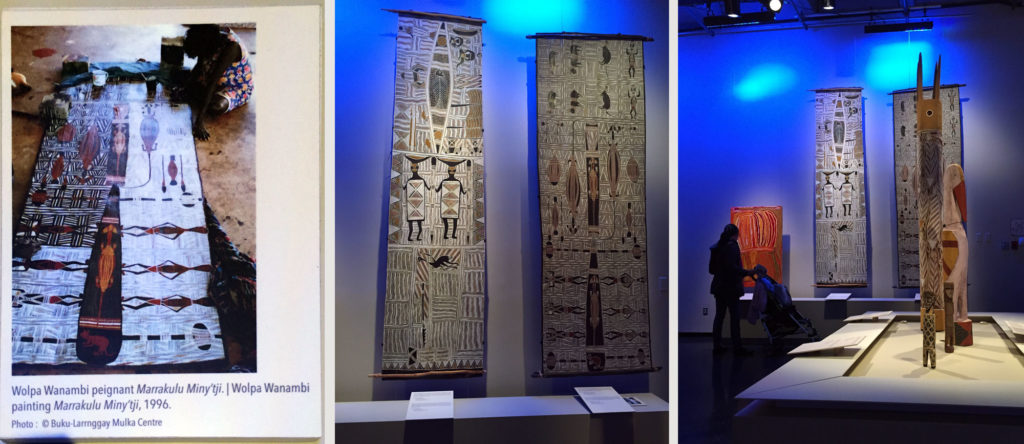
The marks pulsed with the integrity of nature, spirit straight through the application of paint, carefully applied shapes and patterns.
This prompted me to wonder: How abstract can we go with scribing? How far can we push the comprehensive limits of systems, and our own limits, to shift the place of understanding? Can scribing also generate a powerful vibrational field that transcends the literality of the words?
To date, i’ve aimed in my visual practice to synthesize threads of content into one, or a series of, encapsulating pictures. It’s been an integrative approach, to surface and reveal unnamed coherence, wholeness. In a way, it’s been the opposite of storytelling, which i have interpreted as the sharing of known, existing data, in linear flow. But what if scribing could embody, in straightforward terms, the dimensionality of past, present, and future into a larger timelessness, at once?
Arriving in Berlin with such sadness, though, I lacked courage to attempt this kind of breadth. “Why bother?” Hot air sat on my skin like current events crushed at my heart. My gloom held back the spirit to create, reinforcing my bleakness. I genuinely wondered: How can I rise the self, to rise the tone of our times?

I sat in the empty space, the circle arranged and waiting, wall large – larger than I remembered – with black folded paper carried from Boston on the floor, unfolded, map like. And then something shifted…
MAPPING
I recalled a night sailing on the ocean with my dad and brother, with charts, but with no land in site – cold, rolling waters, impenetrable indigo through which the boat somehow cut. For a while we had no radio (or so i remember) and no clarity of a possible storm headed our way. But Dad could always navigate in fog (though that night skies were crisp) and he has always trusted his ability to accurately read conditions to guide the boat. Aside from a near-encounter with a fishing vessel, approached more out of curiosity than lost wandering, we were fine.
From my journal on that trip in August 2014:
Tack – alignment of a sailing vessel with respect to the currents below and wind above
On structures and mental models and on trends
we determine the most helpful facilitation TACK…
The role of a scribe is to craft maps that aid with tacking. Google defines the verb “tack” as to “change course by turning a boat’s head into and through the wind.” And further tack, the noun: “a small, sharp, broad-headed nail,” and “a long stitch used to fasten fabrics together temporarily, prior to permanent sewing.” All these meanings make sense!
So with this in mind, by leaving the creases of the paper intact, i sought to evoke a map. This would offer a reference to action (what to DO with information in a drawing) as informed by structure (the mental ordering and representation of things) derived from Source (deeper, natural dimensions like wind and currents.)
DIVING
“We are growing together what belongs together,” said Otto (Scharmer) over our first dinner. He continued: “Matt Damon recently quoted Bill Clinton, ‘Turn towards the problem you see; you have to engage.’ This applies especially in moments of disruption. How do we engage with reality? We have to step in…” He proceeded through the arc of Absencing:
“Why is fear such a thriving business? Three unaddressed structural problems: 1) Inequity – drives desperation 2) Lack of democracy paired with dialogue / public debate, and 3) Inspiring purpose and vision in deeper levels of humanity.”
This, the fog we now face. The call for all visual practitioners working in the territory of Presencing? Create visual structures to aid in navigating disconnects. This thinking set in motion the theme of the main drawing, which was scaling down, quieting, going inside…. to scale up, to reorient.
After dinner i finally hung the paper (procrastinating, or waiting for what felt right, all day…) realizing it had to be fixed from above, trailing down, free at the bottom to crinkle in a breeze. The sober, looming verticality draped as an unintentional ode to Mikus, Martin, Rothko, and even the Holocaust Memorial, tombstones, and death. And, with this, genuine ending and beginning. It was not an arbitrary choice of material or hanging. It was the first gesture of the drawing itself.
Another initial gesture, choosing to extract and highlight the tree from the final December 2015 u.lab image. Each drawing ends with a lead into the next…
Headlines from the following Saturday morning’s session, linking back to that previous picture:
“What is our plow? Cultivating the quality of relationship in the social field. Without this, nothing significant can be accomplished… We turn the camera, the mirror, back on planet self, including our relationships, and back on planet earth… u.school is an aspiration, a “flip”, and activation of connection of seeds…” – OS
More time together, more insights from the group. A sampling of themes (in no order):
- Compassion “Nurture the great potential.”
- Structure “Bottom up…”
- Legacy “To transcend, connect internal journey to external work.”
- Place “How do i step in?”
- Impact “The impact is in the black space between the stars – in the space we cannot see.”
- Truth “Which are the hard truths that need to be said?”
- Despair “As if the sky is falling down…”
- Self “Who am i, truly, and what do i want to grow into that is unique?”
- Intergenerations “We become bigger together.”
- Ecology “What are supportive infrastructures to grow?”
- Seeing “Current reality from a different perspective…”
As the session continued, in gaps and from my notes, I fleshed things out from the earlier starting point of the rough tree and iceberg. I drew very little – almost nothing – live, while people were talking. At this point it was clarifying that the “more known” was on the left panel, the “less known” was in the center, and the “unknown” on the right panel. “Social field” on the bottom. The “call” in the middle. “Facing reality” on top.
Sunday morning we were guided in an awareness practice by Arawana Hayashi, set up with a quote from Gaylon Ferguson’s book Natural Bravery: “Here sacredness is another word for the good quality of our experience.” Arawana continued, “Seeing the goodness…. Every person wants a good life. Every person aspires…”
And with that, ascension seeded.
Our work, in the midst of it all, the “activation of the intelligence of the heart, in service of social change” and awakening, strengthening the trunk, enlivening the increasingly vibrant eco-system. “The gold of knowing is already in the soil and takes listening… Practice the listening to mine the gold of what we have, to make it more accessible.” – OS
Additional gems that did not make it into the wall but seem too good not to note:
- “Are we showing up for what we need to show up for, and how do we know?”
- “How do we thicken our narrative? Start bringing in stories from the edges.”
- “The minimal organizing structure is not yet clear.”
- “The absence of structure is still a decision about structure.”
- (As bells chimed in the distance) “So the fire can come in and it can come in with care.”
- “We can trust the heart to set the priorities.”
- “Look close in and expand outwards.”
- “We are what we measure. We are what we attend to.”
- “Help people bring about real change by making an interior journey towards a new understanding of who they are in this world.”
- And below, notes of a shared physical sculpture representing taking in, communicating out, and receiving back – a sort of breathing through the lungs/circulatory system. (This made it’s way to the far upper right of the drawing, the very final gesture.)
Overarching themes: turning the mirror back, the readiness for a stronger trunk (enabling conditions), the activation of the intelligence of the human heart, the difficulty of inversion of identity as we come to find a more current, appropriate form for ourselves, organizations, larger institutions, and even governments.
Random scribble to self: To not draw – to reserve the hand and the visuals – encourages group listening. (Less reliance on the scribe capturing everything…)
LETTING GO
Once we had ended, i quickly pulled the paper off the walls, back to the floor, and folded them carefully, deciding each part needed to go home to a different region. The body, dispersed: left section to China, center to Brazil, and right section to Scotland. The blank? To Cambridge MA, for the next round. There is great relief in the removal of images and resetting of an environment – a staging for what’s to come – a cleansing of the palette.
Dream state: (Voice to text into phone in the dark) Monday morning 4:30 AM, in bed, thick, after the heated flow-through of past two days. I cannot sleep. I think this is a consequence of being plugged into the social field, the energy of this dynamic place and the people with whom I’ve shared the past three days. Tapping in to extract, I am swollen. There is a part of me that cannot deeply rest, which comes from a hesitancy of unplugging? Of course rest is required. I can no longer find order in my mind…
I woke. The team reflected. I made it home, wondering along the way (over three movies) about the non-necessity of this exhaustion. There has to be another way. But for now, this is as far as i have gotten on the “way”. Balance is faintly on the horizon, and elusive.
GENERATIVE SCRIBING
More than a mapping of the drawing itself, and more than the context that led up to the map, I am actually compelled to speak to generative scribing – scribing of and for the social body. My experience of this kind of work, where we operate from Source, is that it’s a process of heart-sensing into. Into.
It’s not circling, hovering over or about. It’s not counting the minutes until the person stops speaking and we can go home. It’s not staying comfortable with me-them. It’s not not caring.
It IS piercing through to something essential. Seeing clearly without fear of result or consequence of what comes forward. It requires trust in the complete blankness of things. It only can happen when the social body (a handful or thousands of people and energies) are committed to being together in place and time – and across place and time – to a joining.
It’s groping in the dark to find threads of hope, and coming back to the land of sense to get that out and up on a wall for others to witness.
It’s believing that any witness of the drawing is an active participant in the creation of the drawing. There is no “other”. There is a hand that holds a marker that arcs forward from an extended arm of an upright, physical body acting purely on behalf of the whole. I draw because we are.
It’s drawing to ease the challenge of societal inversion, in service of human awakening. As we fall, we rise. As we cascade, we ascend.



